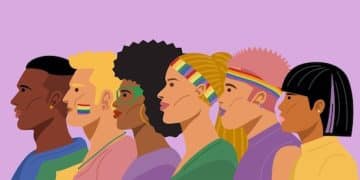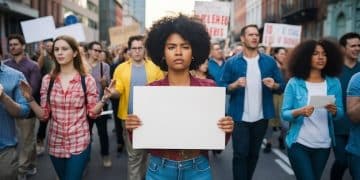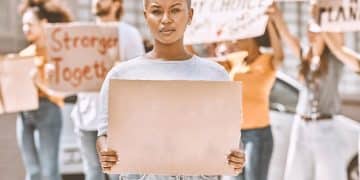Intersectionality in 2025: Shaping Social Justice Movements

Examining the Role of Intersectionality in Shaping Modern Social Justice Movements: A 2025 Analysis reveals how understanding interconnected social categorizations like race, class, and gender is crucial for effective and equitable social justice strategies in coming years.
The future of social justice hinges on a deeper understanding of examining the role of intersectionality in shaping modern social justice movements: a 2025 analysis. How will the complex interplay of race, class, gender, and other identities influence the strategies and outcomes of social justice initiatives in the years to come?
Understanding Intersectionality: A 2025 Perspective
Intersectionality, a term coined by Kimberlé Crenshaw, acknowledges that various forms of social stratification, such as race, class, gender, and sexual orientation, create interconnected systems of discrimination or disadvantage. In 2025, a nuanced understanding of intersectionality will be even more critical for addressing complex social justice issues.
The concept challenges single-axis frameworks that often overlook the unique experiences of individuals who face multiple forms of oppression. How will this understanding evolve and become more central to social justice movements?
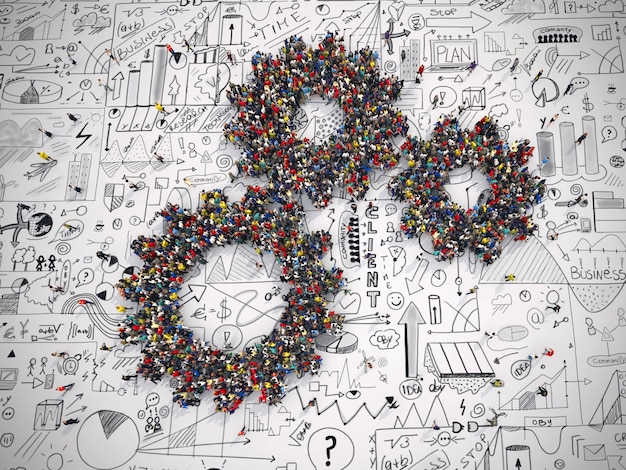
The Origins of Intersectionality
Kimberlé Crenshaw introduced intersectionality in the late 1980s to explain how Black women’s experiences were often overlooked in both feminist and anti-racist movements. Her work highlighted the need to consider the combined impact of racism and sexism.
Why Intersectionality Matters in 2025
As society becomes more diverse and interconnected, the importance of intersectionality will only increase. It provides a framework for understanding the complexities of identity and addressing systemic inequalities more effectively.
- Comprehensive Understanding: Recognizes the multifaceted nature of individual experiences.
- Equitable Solutions: Develops strategies that address the root causes of inequality for all individuals.
- Inclusive Movements: Promotes solidarity and collaboration across diverse groups.
In conclusion, understanding intersectionality in 2025 means acknowledging and addressing the complex web of social categorizations that shape individual experiences and drive systemic inequalities.
The Impact of Intersectionality on Social Justice Strategies
Intersectionality significantly influences how social justice strategies are developed and implemented. In 2025, movements that fail to incorporate an intersectional approach risk perpetuating existing inequalities and excluding marginalized voices.
How can activists and organizations ensure that their strategies are truly inclusive and effective in addressing the diverse needs of individuals and communities?
Inclusive Policy Making
Governments and organizations must adopt an intersectional lens when creating policies and programs. This means considering how different social categories intersect to create unique challenges and opportunities.
Grassroots Movements and Intersectionality
Local movements are often at the forefront of addressing intersectional issues. By centering the voices of those most affected, these movements can drive meaningful change from the ground up.
- Community-Led Initiatives: Empowering local communities to identify and address their unique needs.
- Collaborative Partnerships: Working with diverse organizations to build broad-based support for social justice initiatives.
- Advocacy and Awareness: Raising awareness of intersectional issues and advocating for policy changes.
In summary, the impact of intersectionality on social justice strategies in 2025 is about creating policies and movements that are truly inclusive, equitable, and responsive to the diverse needs of individuals and communities.
Intersectionality and the Fight for Racial Justice
Racial justice movements have long grappled with the complexities of intersectionality. In 2025, a renewed focus on the intersection of race with other identities, such as gender, class, and sexual orientation, will be crucial for achieving lasting change.
How can activists and advocates ensure that racial justice movements are inclusive of all individuals, regardless of their other social identities?
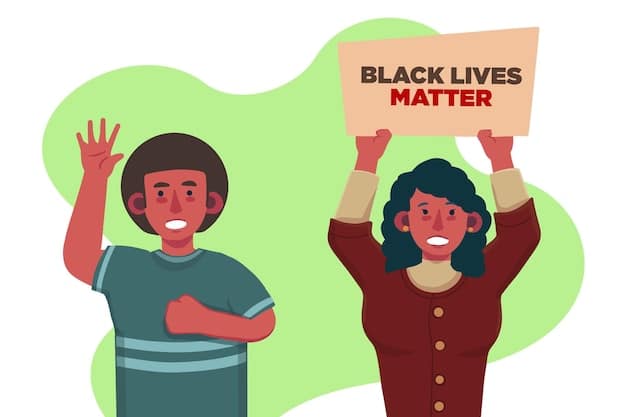
Addressing Systemic Racism
Systemic racism intersects with other forms of oppression to create unique challenges for individuals from marginalized communities. Addressing these intersecting systems requires a comprehensive approach.
Centering Marginalized Voices
It is essential to center the voices of those who are most affected by systemic racism, including Black women, LGBTQ+ individuals, and people with disabilities.
- Amplifying Diverse Perspectives: Providing platforms for individuals from marginalized communities to share their stories and experiences.
- Challenging Dominant Narratives: Reframing the conversation around race to include a broader range of perspectives.
- Building Coalitions: Forming alliances with other social justice movements to address intersecting forms of oppression.
In conclusion, the fight for racial justice in 2025 must actively address the intersection of race with other identities, ensuring that all individuals are included and that systemic inequalities are challenged.
Gender Equality Through an Intersectional Lens
The fight for gender equality must also embrace intersectionality to address the unique challenges faced by women from diverse backgrounds. In 2025, a focus on the intersection of gender with race, class, and other identities will be essential for achieving true gender equality.
How can feminist movements ensure that they are inclusive of all women, regardless of their other social identities?
Challenging Gender Norms
Gender norms intersect with other social expectations to create unique challenges for individuals from marginalized communities. Challenging these intersecting norms requires a nuanced approach.
Economic Empowerment for All Women
Economic empowerment is crucial for achieving gender equality, but it must be tailored to the specific needs of women from diverse backgrounds.
- Equal Pay for Equal Work: Advocating for policies that ensure women are paid the same as men for doing the same job.
- Access to Education and Training: Providing women with the skills and knowledge they need to succeed in the workforce.
- Supporting Women-Owned Businesses: Creating opportunities for women to start and grow their own businesses.
In summary, achieving gender equality in 2025 requires a commitment to intersectionality, ensuring that all women have the opportunity to thrive, regardless of their other social identities.
LGBTQ+ Rights: An Intersectional Approach
The fight for LGBTQ+ rights is deeply intertwined with other social justice issues. In 2025, an intersectional approach will be necessary to address the unique challenges faced by LGBTQ+ individuals from marginalized communities.
How can LGBTQ+ rights movements ensure that they are inclusive of all individuals, regardless of their race, class, gender, or other social identities?
Addressing Discrimination
LGBTQ+ individuals often face discrimination based on their sexual orientation or gender identity, which can be compounded by other forms of oppression.
Creating Safe and Inclusive Spaces
It is essential to create safe and inclusive spaces for LGBTQ+ individuals from diverse backgrounds, where they can feel supported and affirmed.
- Safe Schools and Workplaces: Implementing policies that protect LGBTQ+ individuals from discrimination and harassment.
- Community Centers and Support Groups: Providing resources and services for LGBTQ+ individuals and their families.
- Cultural Competency Training: Educating people about LGBTQ+ issues to promote understanding and acceptance.
In conclusion, advancing LGBTQ+ rights in 2025 requires an intersectional approach, ensuring that all individuals have the opportunity to live authentically and without fear of discrimination.
The Role of Technology in Advancing Intersectional Social Justice
Technology plays an increasingly important role in social justice movements. In 2025, it can be leveraged to advance intersectional social justice by amplifying marginalized voices, facilitating communication, and promoting awareness.
How can activists and organizations use technology to support intersectional social justice initiatives and create a more equitable world?
Social Media Activism
Social media platforms can be powerful tools for raising awareness of intersectional issues and mobilizing support for social justice movements.
Data-Driven Advocacy
Data analysis can be used to identify patterns of inequality and inform policy recommendations.
- Mapping Disparities: Using data to visualize and understand how social inequalities are distributed across communities.
- Evaluating Programs: Assessing the effectiveness of social justice initiatives and identifying areas for improvement.
- Informing Policy: Using data to advocate for evidence-based policies that address systemic inequalities.
In summary, technology can be a valuable tool for advancing intersectional social justice in 2025, but it must be used responsibly and ethically, with a focus on equity and inclusion.
| Key Point | Brief Description |
|---|---|
| 💡 Intersectionality Defined | Understanding interconnected social categorizations for equitable strategies. |
| ✊ Racial Justice | Addressing intersecting systems of racism with other forms of oppression. |
| ♀️ Gender Equality | Achieving inclusivity by addressing unique challenges faced by diverse women. |
| 🏳️🌈 LGBTQ+ Rights | Ensuring inclusivity of LGBTQ+ individuals, regardless of social identities. |
Frequently Asked Questions
▼
Intersectionality recognizes how different social categorizations create interconnected systems of discrimination. Understanding this helps develop more inclusive and effective social justice strategies.
▼
It ensures racial justice movements include all individuals, especially those facing compounded oppressions like Black women and LGBTQ+ people of color, leading to holistic solutions.
▼
Technology amplifies marginalized voices, facilitates communication, and promotes awareness. However, it must be used responsibly to avoid digital divides and perpetuate biases.
▼
Feminist movements can include all women by addressing the unique challenges they face due to their race, class, and other identities, ensuring no one is left behind.
▼
It addresses the specific forms of discrimination that LGBTQ+ individuals from marginalized communities face. This leads to more inclusive and supportive environments for everyone.
Conclusion
Examining the role of intersectionality in shaping modern social justice movements: a 2025 analysis reveals its growing importance for creating effective, equitable, and inclusive social justice strategies. By understanding and addressing the interconnected nature of social categorizations, we can build a more just and equitable world for all.
